Is Virtual Fencing Right for Your Ranch?
Pros, cons and what to know before buying into virtual fencing as an alternative to traditional permanent or temporary fencing.
Do barbed-wire fences and adaptive grazing work in harmony? With labor shortages along with the cost of cross-fencing with either permanent or electric fences, traditional fencing isn’t always an option, especially in big pastures.
Virtual fencing, while not the be-all and end-all, can be a solution. Essentially, virtual fencing is a system a rancher can use to program virtual barriers on a smartphone or computer to include or exclude certain areas of a pasture. Animals are fitted with collars that have GPS transceivers, tracking their location and generating sound cues and humane electrical impulses when animals come near the boundary.
Leo Barthelmess is an early adopter who tested such a system on the ranch he and his family run south of Malta, Montana, half on private land and half on Bureau of Land Management (BLM) leases. They run a commercial cow-calf outfit on 25,000 acres in an ecosystem that he’s told is the largest intact grassland in the world.
The region is home to the second longest migration corridor in the country for wildlife, especially antelope, and is the summer home to around a dozen prairie bird species facing potential endangered species listings.
“There’s a lot of conservation interest here,” he says, “and nobody wants more infrastructure out here.”
Technology to the rescue.
Barthelmess, through the Ranchers Stewardship Alliance (www.ranchstewards.org), received a grant to discover if virtual fencing is a viable alternative to traditional fencing. In November 2019, he collared a herd of dry, pregnant cows grazing winter pasture.
Turns out that virtual fencing was indeed a viable alternative, allowing him to change adaptive grazing paddocks virtually, protect riparian areas and use animal impact to help restore native forages.
Barthelmess’ ranch has 40 permanent-fence pastures on both private and BLM land, the largest of which is 4,000 acres. The ranch’s 40 sections have 60 permanent water sources most years. And access to water is what determines how cattle graze a pasture.
He and his crew subdivided the largest pastures based on water availability and used virtual fencing to move cattle. His goal was to increase stock density by applying traditional pasture rotation with a more targeted, high density grazing program.
Higher density grazing means cattle are moved more frequently, and each grazed pasture unit has a longer rest period.
“We just move from water source to water source with the virtual fence,” he says. On BLM ground, he can keep cattle away from streams, riparian areas and other places the public likes to use.
Much of the rangeland in northeast Montana was tilled during the homestead era and has since supported non-native plants such as crested wheatgrass.
“We have been using virtual fencing to target those non-native grass areas within the big pastures,” Barthelmess says.
Long term, it will help the land return to native grasses and forbs. In the meantime, “It’s allowed us to freshen up the nutrition and palatability of the grass, because we’re knocking a bunch of that decadent material down to the ground to feed the soil.”
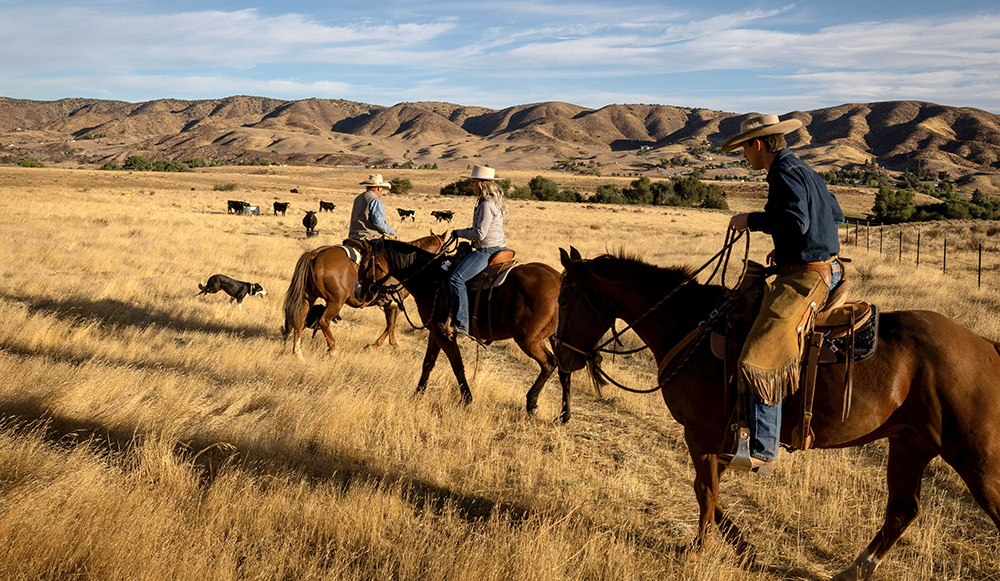
Some Questions Remain
However, the technology is new enough that questions remain, says Robin White, associate professor and associate director of the Center for Advanced Innovation in Agriculture at Virginia Tech.
“These technologies typically rely on GPS collars on animals, and they work a lot like an electric dog fence,” she says. “Typically, there’s an audio stimulus when the animal comes close to a perimeter, and then there is an electric stimulus to encourage the animal to stay away from the barrier.”
The collars allow a beef producer to track the location of animals in near real time through web- and phone-based apps.
“Some of the things we don’t know is how often you can move the boundaries. Is the animal really responding to the visual or the auditory stimulus, or have they learned that that part of the field is where they get shocked and they don’t want to go over there?”
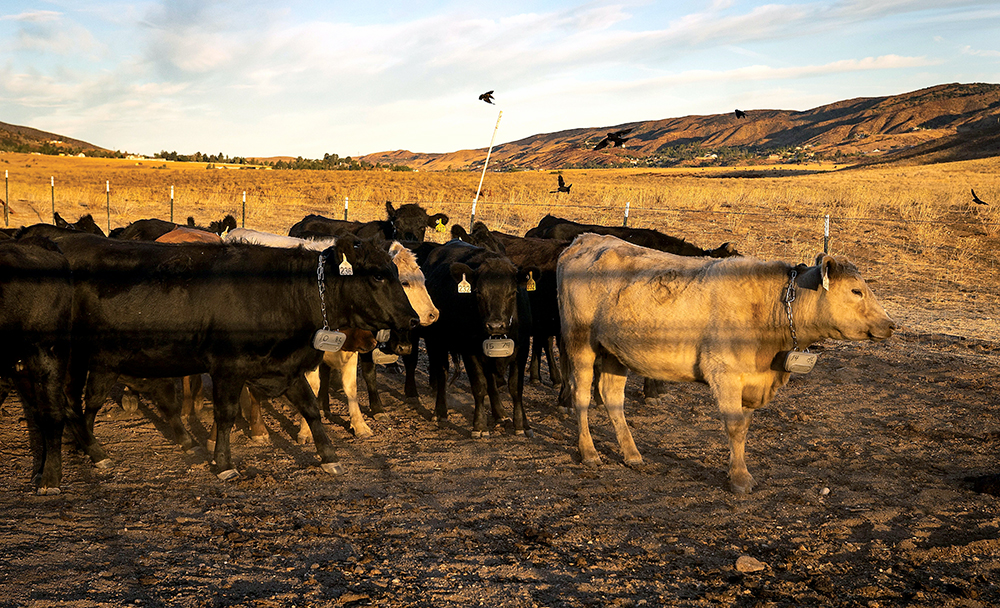
Virtual Herding
There are a lot of reasons that virtual fencing might make sense. Mike Williams has one very compelling reason. He leases a 12,000-acre ranch in the mountains northeast of Los Angeles. One of the lease stipulations is no cross fences.
He herded his cattle when he first leased the ranch, keeping them in a bunch and moving them around every two or three days. While it worked, it was pretty much a full-time job, and Williams runs the ranch mostly by himself.
“When you get sidetracked, the cows get spread out, and it’s a job getting them back together again. So, I saw virtual fences as a way of maybe reducing the amount of area I had to go to when I did put them back together,” he says.
“It’s been so successful that I don’t spend nearly as much time with herding as I do relying on the virtual fence. Although I still use herding when I want a specific herd impact in specific areas, more concentrated than what the virtual fence is really designed to do.”
Beyond that, Williams says while cattle can be influenced by the virtual fence, they’re not necessarily confined by it.
“Some cows learn how to beat it,” he says. “It’s not something you’d want to use next to a highway, for example.” In addition, battery life of the collars is something to keep in mind.
However, he says the virtual fencing collars are effective in keeping track of the cattle in general.
“Just looking at the computer, you get an idea where they are at any given time, and you get an idea of the intensity that they’ve been in particular areas. I was surprised at some of the areas the cattle go to and some of the grazing patterns that the cattle were demonstrating.”
For More Information
If you’re interested in grants or other help to add virtual fencing, contact your preferred local conservationist, says Martin Townsend, Ranchers Stewardship Alliance conservation director.
“NRCS is offering [cost-share] help through EQIP in most states. National and state grazing land coalitions, conservation districts and other entities may be as well.”
The challenge is that grants and similar support continue to change, according to Allison Burenheide with Vence, Merck Animal Health’s virtual fencing system.
“We’ve seen great success working with BLM, Forest Service and conservation organizations such as Rocky Mountain Elk Foundation, Ducks Unlimited, Pheasants Forever and Sage Grouse Conservation,” she says.
Things to consider about virtual fencing:
- Available funding within your area.
- Needs within your area: post-burn grazing, wildlife migration/protection, invasive grass species, conservation focus, etc.
- Be prepared for what you’ll need for grants — most likely a grazing plan showing that you work with your range conservationist.
- Knowledge of topography and cell signal availability, which can impact effectiveness.
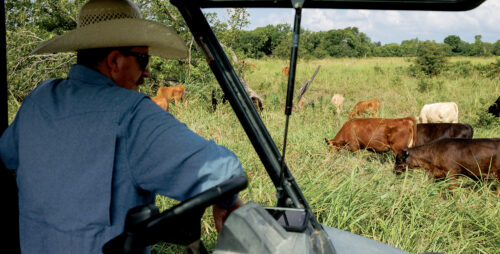
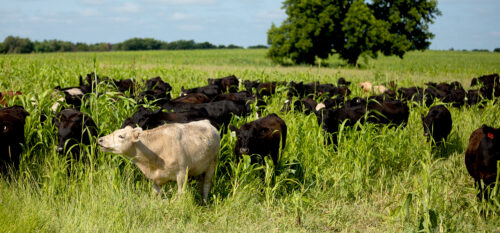
Comment
Leave a Reply
2 comment on: "Is Virtual Fencing Right for Your Ranch?""
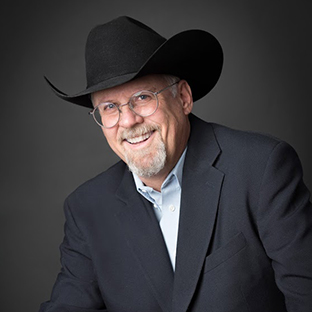
Ronald Toomer
June 28, 2025need list of Virtual Fence Manufacturer
Kayla Meier
July 16, 2025We recommend contacting your preferred local conservationist. NRCS is typically really helpful for these practices and they may know someone local to you using virtual fencing.